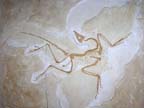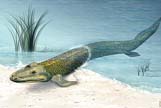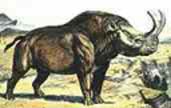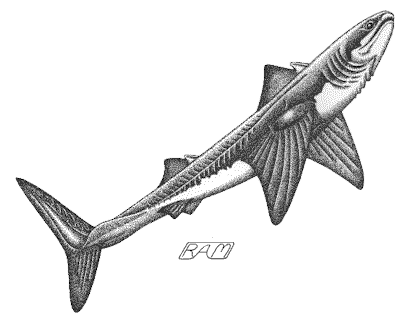 |
 |
 |
 |
 |
Produced
by the Population Genetics and Evolution class, Furman University |
||||
 |
 |
 |
 |
 |
Produced
by the Population Genetics and Evolution class, Furman University |
||||
 |
The
Devonian: Cladoselache |
 |
||
| Cladoselache
are one of the most well-known early sharks, and they resemble the modern
mackerel shark (Martin 2003). They lived in the warmer waters over eastern
North America (Miller 2000) and their fossils were first found in the
Cleveland Shale. Many of the fossils that have been found are actually
whole, and some even include remnants of internal organs (Coates 2010).
These sharks grew to be about three feet long, and had several unique
characteristics. They had weaker jaws than modern sharks; however the
muscles used to close their jaws were very strong. Another interesting
feature is that they had large forked tails, which probably aided them
in swimming faster. This means that they were most likely preyed upon
by larger fish, such as Dunkleosteus (Miller 2000). However,
they were predators for other fish as well, as some smaller fish fossils
have been found within the stomachs of these sharks (Coates 2010). Cladoselache,
unlike most other sharks, were not covered in dermal denticles (Martin
2003). In fact, they are only known to have compound scales around their
head and fins, which is a very odd characteristic for sharks. Perhaps
even more unique, however, is the fact that Cladoselache do not
appear to have claspers, which is a male internal reproductive structure.
As a result, little is known to how they reproduced; but they clearly
managed to reproduce somehow (Coates 2010)! Page by Lindsay Gerzel |
 |
| Cladoselache. Image from: Martin 2003. | |
|
Coates M. 2010. Cladoselache. AccessScience@McGraw-Hill. Accessed February 24, 2010 Martin RA.2003. Ancient Sharks: Cladoselache. Biology of Sharks and Rays. Accessed February 24, 2010. Miller DW. 2000. Cladoselache. Discovery Education. Accessed February 24, 2010. |